In the second episode of “The Sea and Culture of Japan,” underwater photographer Takuya Nakamura and oceanographers Yuta Kawamoto and Yudai Tsubone dived the Sea of Japan off the coast of Tsuruoka City, Yamagata Prefecture. The dive store Urban Sports, which offers the most advanced diving style in Tsuruoka City, was the dive store that accompanied the team for this report.
In the feature article, we introduced the charm of the Shonai Sea and Takuya and Kawamoto’s first experience with a rebreather through Takuya’s underwater photographs. After the dive, the owner of Urban Sports, his daughter and staff member, Takuya, and Kawamoto held a round-table discussion to share their feelings and thoughts.
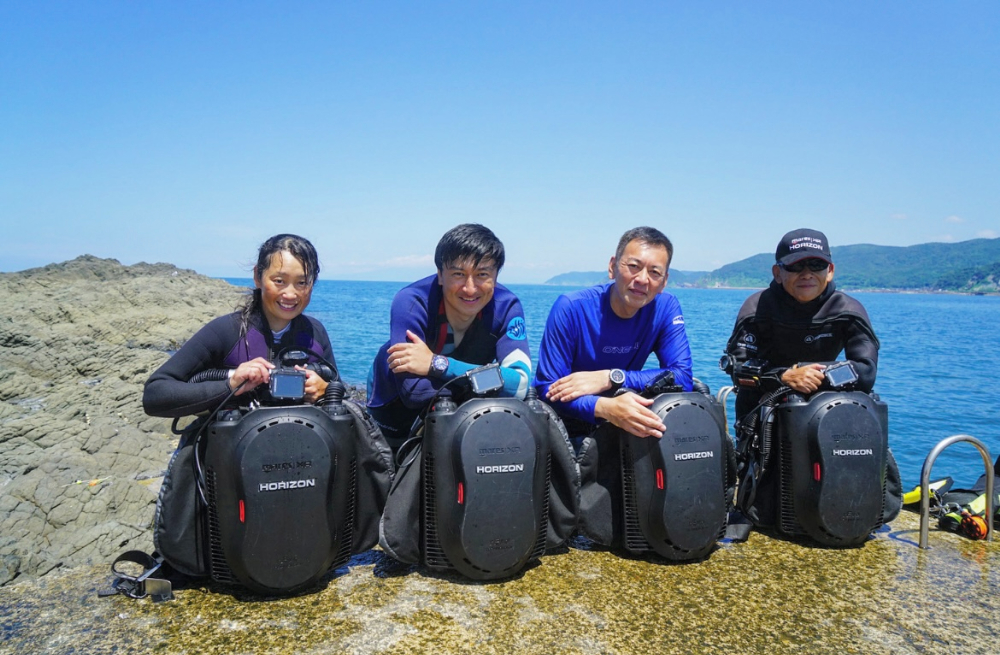
The formation of the sea in Shonai, where the Tsushima Warm Current brings in a variety of creatures
Yuta Kawamoto (Kawamoto): What was the reason for you to open a store in Yamagata in the first place?
Mr. Katsufumi Aiboshi (Mr. Aiboshi): I am from Morioka City, Iwate Prefecture, and at the time I wanted to open my own diving store, there were no nationally known diving spots in any of the six Tohoku prefectures. So I used my time off from work to dive in Iwate, Fukushima, Aomori, Akita, Miyagi, etc., until I arrived in Yamagata.
Kawamoto: So you decided to dive in Yamagata. What is the marine season like in Yamagata?
Aiboshi: You can dive all year round, but winter comes early and the monsoon starts blowing in November, and it becomes very barren. At first, we did it from November to February, but we decided that it would be pointless if we couldn’t dive in the end, so now we take a winter vacation during this period.
Kawamoto: So you take a winter break. What are the characteristics of the sea you were allowed to dive this time?
Aiboshi: The most important feature is that the Tsushima Warm Current flows through the area. The four islands were formed by volcanoes, so there is volcanic activity (*). Because of this, there are differences in elevation, and the beaches are very rugged.
*The columnar joints are a geological structure with regular cracks on both sides, called joints, that do not show any displacement. They are formed when rocks cool down and contract.
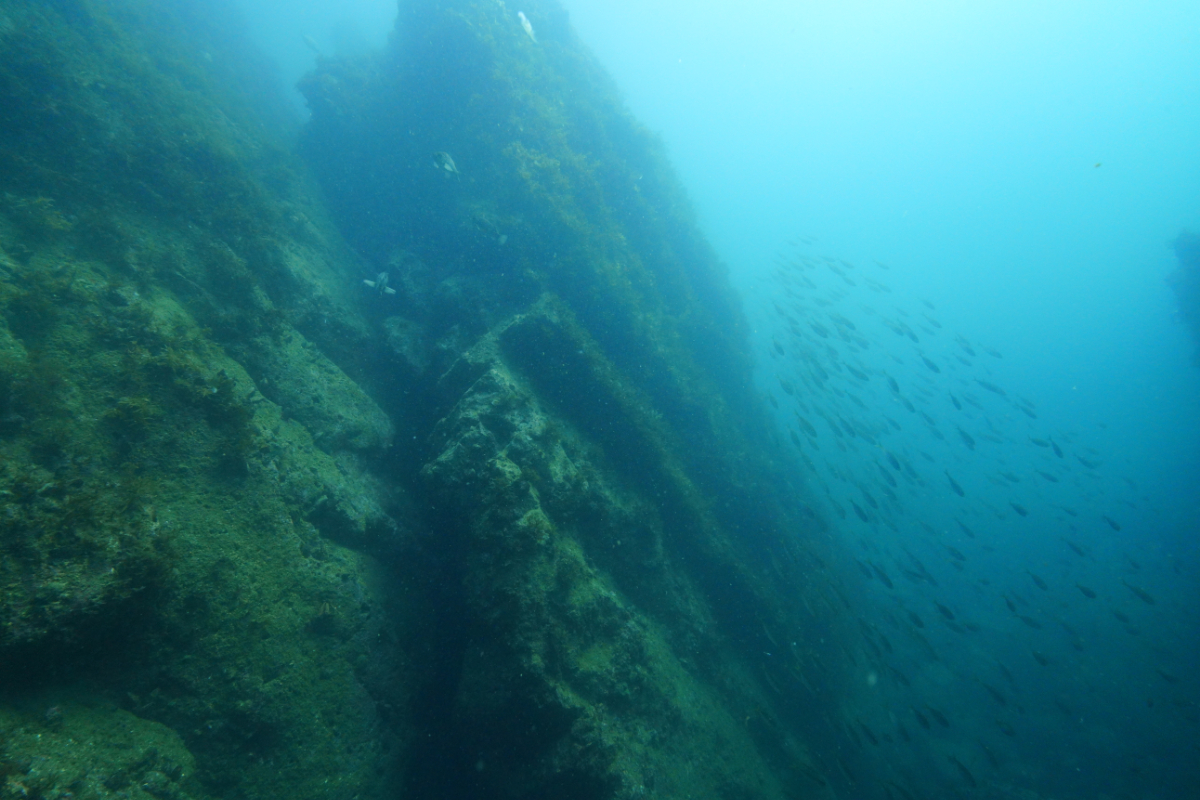
Mr. Takuya Nakamura (hereafter, Takuya): The beach points in the southern part of Izu Oshima have similar topography. Is there much current?
Kawamoto: I have the impression that the Japan Sea has a very strong current.
Aiboshi: When there is, it is quite strong. Sometimes the current is like a river at this point, and it is difficult to advance. Recently, however, the current has been gradually decreasing. It must be a change in the natural environment. Tuna are there all year round, and I think it’s strange.
Takuya: Do you see a lot of southern species coming into the area in the early fall?
Aiboshi: Yes, they do.
Takuya: That is also nice.
Anna Aiboshi (Anna): You can feel the four seasons even in the ocean.
Aiboshi: In spring, the Tsushima Warm Current weakens, and the northern marine life that lives north of Yamagata moves south. In summer, the current of the Tsushima Warm Current becomes stronger, and we can see many southern marine organisms that have drifted in from warmer regions.
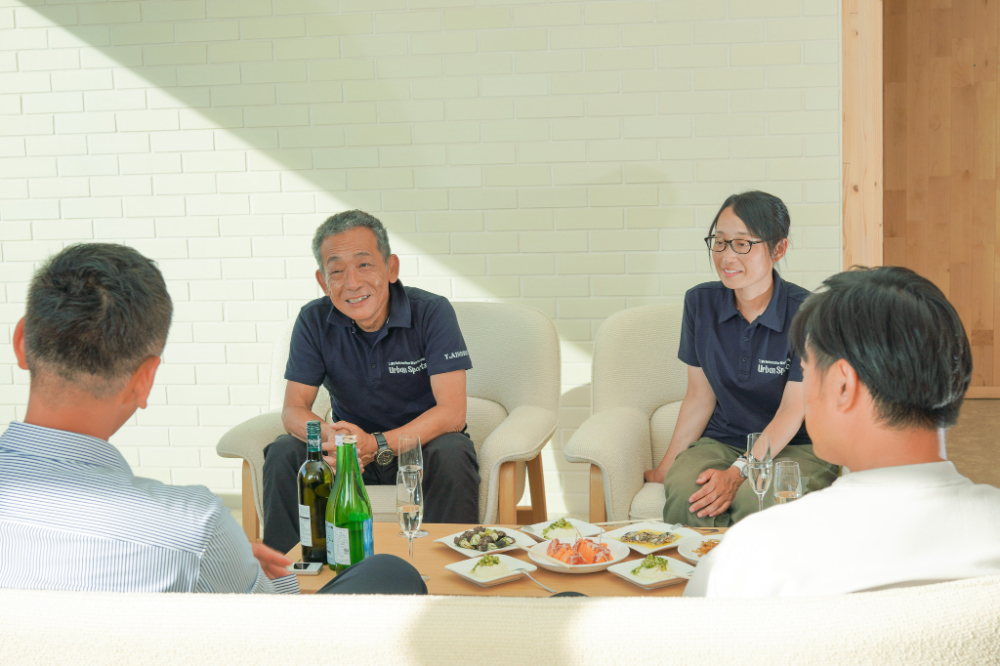
Takuya: It’s great to look for them. There are colored shrimps and other unusual creatures that you don’t usually see in Shonai, and sometimes there are even frogfish (laughs).
A little darker in color! Look out for marine life unique to the Sea of Japan!
Mr. Aiboshi: I don’t have any particular creature in mind, but I would say that many of them are attractive and friendly. For example, I’ve known a snapper, “Hanatare,” for 25 to 26 years now, and I was surprised that it lives that long. I think they live for about 40 years in total. There are also small chagara, but aren’t they darker in color than those seen in the Pacific Ocean?
Takuya: Yes, they are darker. It’s kind of orangey or yellowish.
Aiboshi: Yes, it is, isn’t it? It is a common creature, but when I look at it closely, I think, “Oh, its color is dark.
Takuya: Are there any kinubari?
Aiboshi: Yes, there are. They have one less line.
Takuya: That’s right. The same goby is totally different from the one on the Pacific side, and there are subtle differences from the northern sea, and I thought it was fun for me to see such differences in the creatures.
Kawamoto: For me, when I first dived the sea in Shonai, the climate and the atmosphere of the fishing port reminded me of the sea in Echizen, where I used to dive when I started working at a diving store in Osaka when I was 21 years old. Also, it is said that seaweed has been decreasing in many places in Japan due to rock scorching, but there was still seaweed here. I would like to come back during the season when seaweed is abundant.
But I was still impressed by Urban Sports from start to finish. As I was talking with Takuya-san earlier, of all the dive stores I have seen in Japan, I have never seen one that has so many things in mind, such as all the facilities, quality of service, teamwork, and the sense of distance from the store to the ocean.

Takuya: There is no other place where all the conditions are so well thought out.
Aiboshi: Really? Thank you very much.
Takuya: I am “In the fall of 2022, I will start a new project, “The Sea and Culture of Japan! I want to prove the true charm of the Japanese sea and its culture.” In the discussion “ Yasuaki Kagii, Takuya Nakamura, and Yuta Kawamoto Special Roundtable Discussion,” we talked about “What kind of photos do you want to take for this project? As I said when we talked about “What kind of underwater scenes do you want to take in this project?”, I think Japanese people have a strong image of the sea as colorful, transparent, and with many colors = beautiful, and there is a certain kind of longing for a tropical country. However, what I want to convey in this project is the richness of Japan’s oceans. Water rich in nutrients is called “soup of life,” and the sea in Shonai, where we dived this time, was exactly the same color rich in nutrients. This kind of sea is the “sea of fertility.
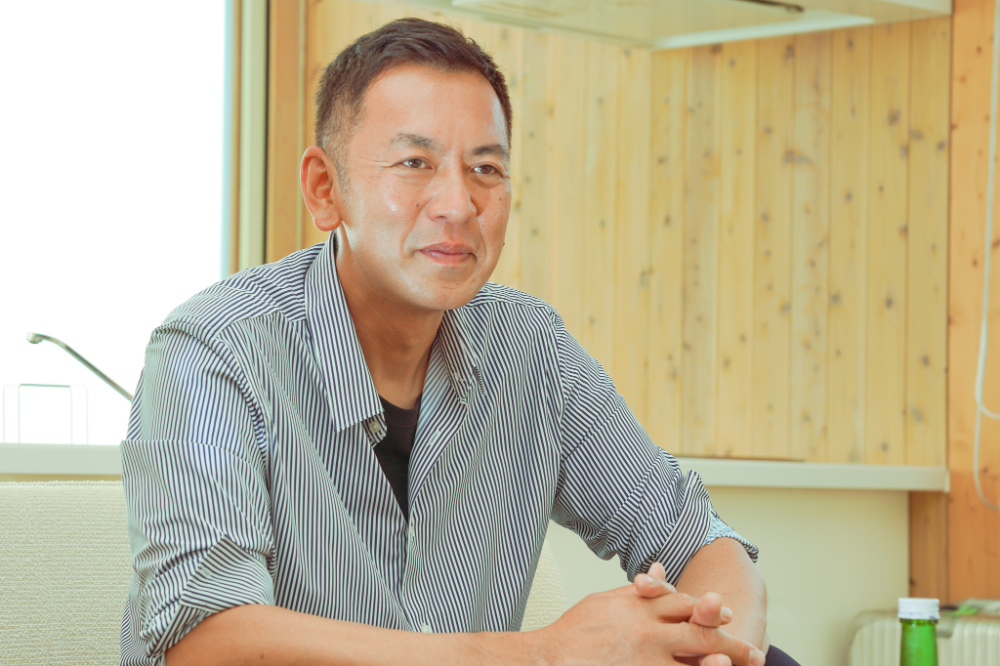
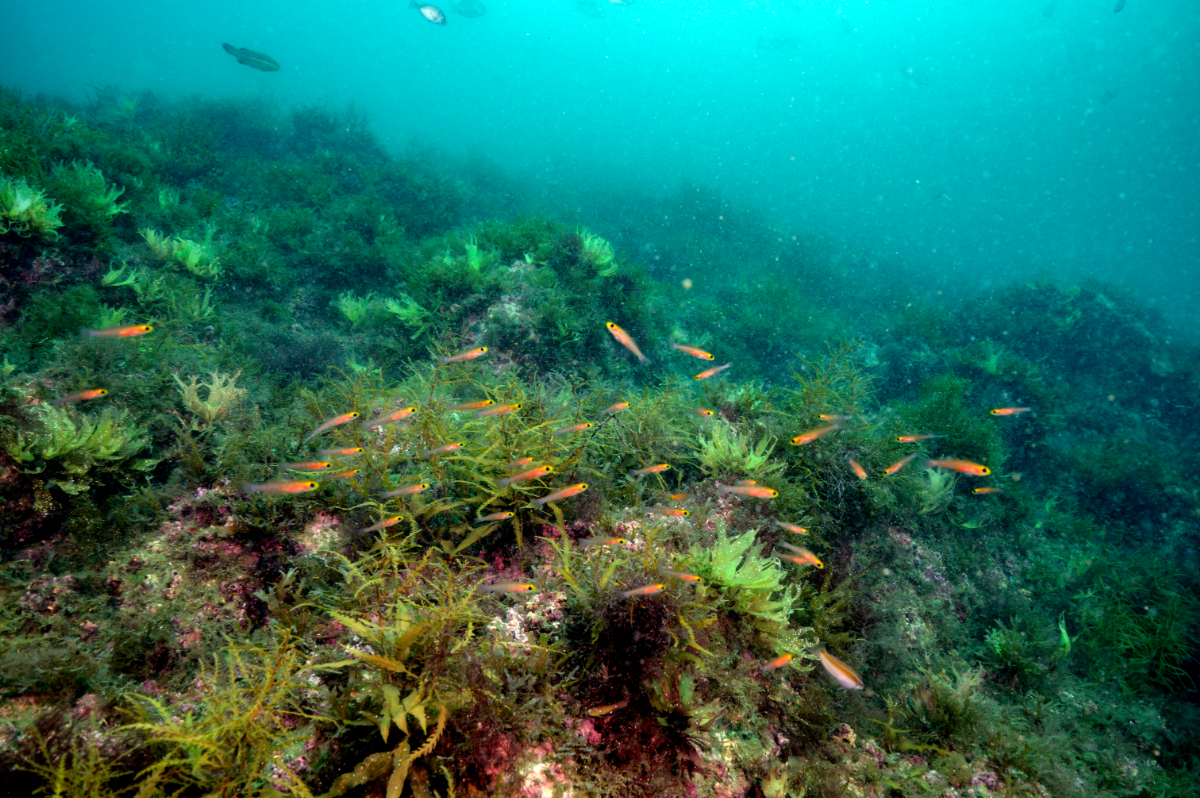
Takuya: That is why, when asked, “What do you like about the seas of Japan?” I think there must be people who can convey the value of “this green sea is beautiful” when asked “What is good about the Japanese sea? This is exactly the kind of ocean I was talking about in the first dialogue.
Anna: We think so too.
Takuya: So, even if we compare with other countries, I think we must be comparing different things.
Kawamoto: We Japanese don’t understand that, do we?
Takuya: For example, unlike American comics, Japanese manga is very sensitive. The Japan Sea is a sea where such delicate expressions can be used, such as silhouettes of light and seaweed, which are shown in such tones because there are not many colors. The sea we dived this time may not be very clear, but I felt that it was an everyday scene, and I was comfortable with that.
And this time I was able to try the rebreather, which made me remember the feeling I had when I first got neutral buoyancy, that it felt good just to float and “this is all I need without anything else.
Kawamoto: I understand that feeling very well. It’s like the feeling of being able to visualize bubbles, light, and air while diving. Just being able to breathe underwater is wonderful. I want to be an innocent instructor who never forgets that.
Takuya: Well, you really reminded me of that. This is what I felt when I first started diving.
Kawamoto: Yes, the rebreather reminded me of that feeling, because people who have been diving for more than 20 years don’t often say, “It’s interesting” after diving again (laughs).
Rebreather’s fascinating new underwater worldview
Kawamoto: Takuya, how was your experience with the rebreather?
Takuya: When I was told “Welcome to the Silent World” during the training, I was half excited and half nervous at first, but to be honest, during the pool training, I wondered if I could use it properly. I wondered if I would be able to use it properly. I was concerned about how to adjust buoyancy, balance, and range of motion. Also, I usually shoot mainly wide-angle, so I wondered how I would be able to get close to the fish.
But when I went out to the sea, I felt surprisingly stress-free. Perhaps it is because I have become accustomed to using the equipment. I realized that “this is what it means to be able to hear sounds in the ocean.
Anna: You said you could hear the sound of horse mackerels swimming by, right?
Takuya: The sound of horse mackerels was like “ba-ba-ba-ba! It sounded like “ba-ba-ba-ba! The contrast between stillness and movement was very distinct. Usually when I take pictures, I don’t actually hear the sound of fish swimming, but I see them with my eyes, feel the sound when they move, and press the shutter. This time, I was very moved to actually hear the sound of the fish moving.
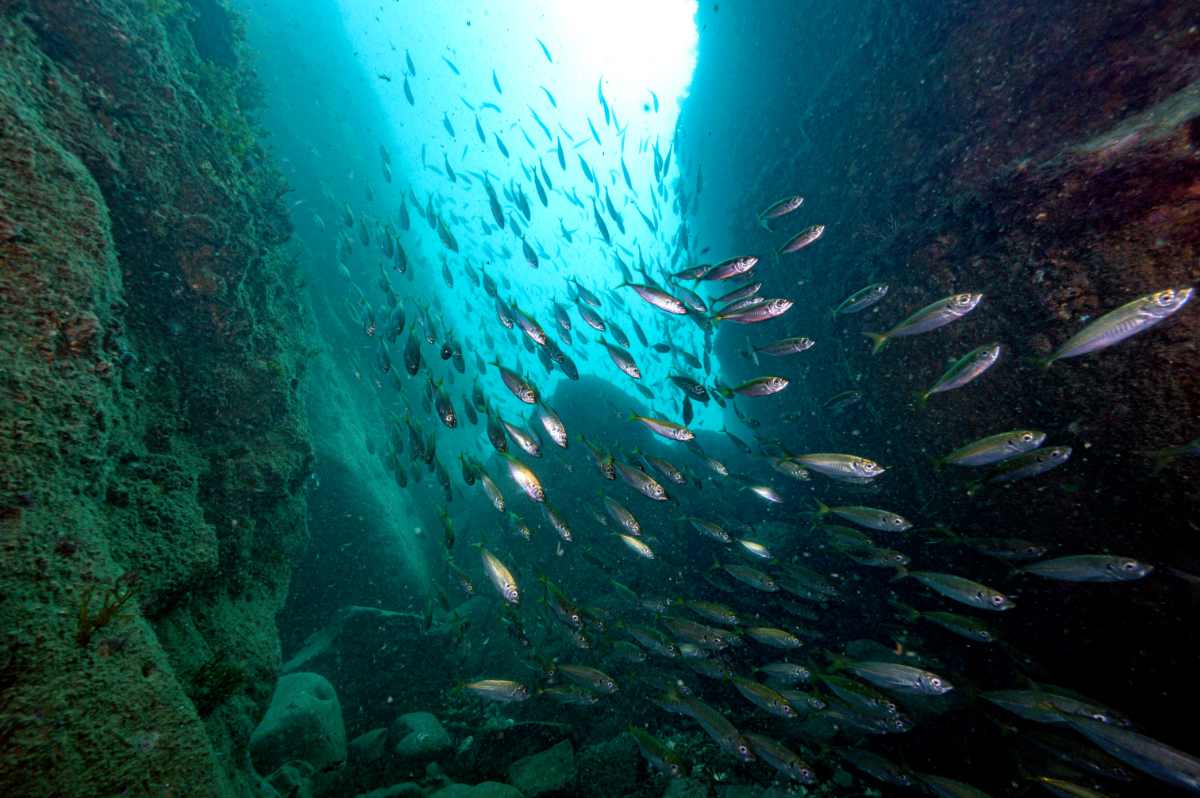
Takuya: I was wondering how I could convey the true sound of the ocean, since I could only hear my own breathing almost exclusively when I was taking videos in the ocean.
However, when I experienced the rebreather this time, I felt new possibilities for expressing realistic ocean sounds such as the creaking sound of ice floes and the sound of a school of fish scattering together with video images.
Aiboshi: I am glad to hear you say so.
Takuya: Usually when I shoot, I have to go against the tide to see the fish better, so I have to go around from above to get closer to them. I wondered if the fish might be interested in me. It changed the way I approached the fish, and it was refreshing.
Kawamoto: For example, how about using the rebreather when you want to hear the whale’s voice ? I enjoyed thinking about what kind of situations would be more interesting if I used it in those situations. It’s no good not to like something without eating it.
Takuya: You have to experience everything at least once.
Aiboshi: That’s right.
Takuya: On the other hand, I had a complex about breathing because I had surgery for pneumonia when I was 0 years old and had childhood asthma. Then, when I was 10 years old, my father (underwater photographer Yukio Nakamura) gave me diving equipment on a family trip to Zamami Island in Kerama, and I dove for the first time. The moment I saw the bubbles bobbing up and down, I thought to myself, ” Oh, I can see my breath, I can follow it, and I can feel it! I could see, track, touch, and hear my breath. I can see, track, touch, and hear my breath. I am living and breathing with all five senses. Experiencing the rebreather reminded me of that moment.
Kawamoto: I think it is important to “prove the value of an instructor,” and from that point of view, Aiboshi-san’s course was very good. When Mr. Aiboshi showed me his iPad and said, “Here are the materials I made,” I was impressed by the wonderful content and the importance of raising one’s own value as an instructor. Also, my favorite part of the Urban Sports store is the lecture room. It is filled with various elements, and I thought it was the place to master the art of play.
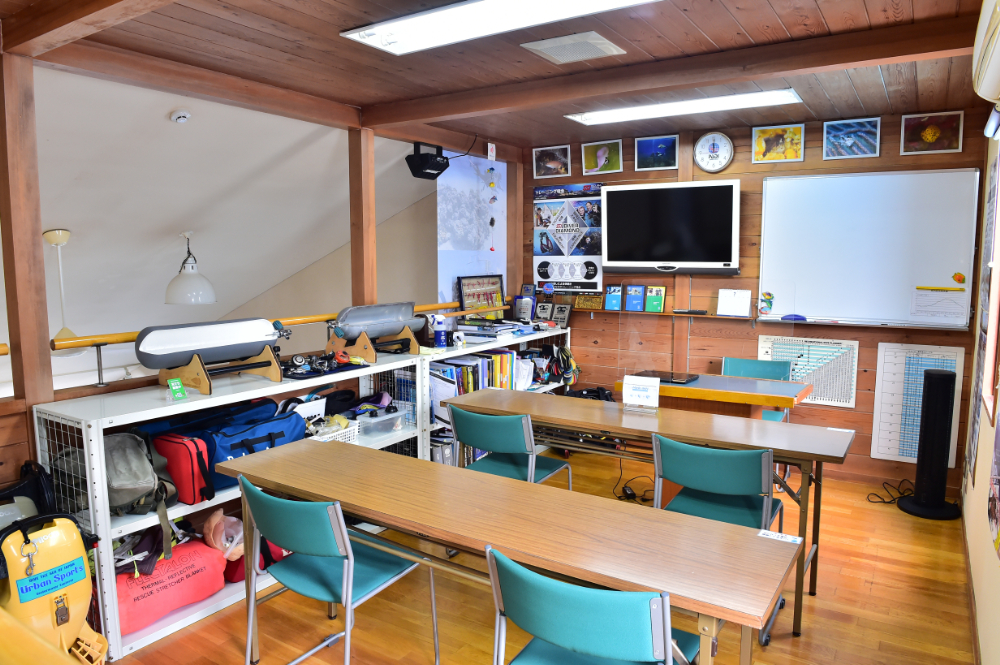
Aiboshi: There are many aspects of the training that cannot be understood simply by explaining them in words, so I want the students to try various things based on their own sensibilities after the important points are covered. I think instructors are the ones who can give advice when they hit a wall.
I don’t really like to start talking when I am not asked a question, or rather, I like to answer questions asked by customers.
Kawamoto: I would like to hear what our teachers think of us.
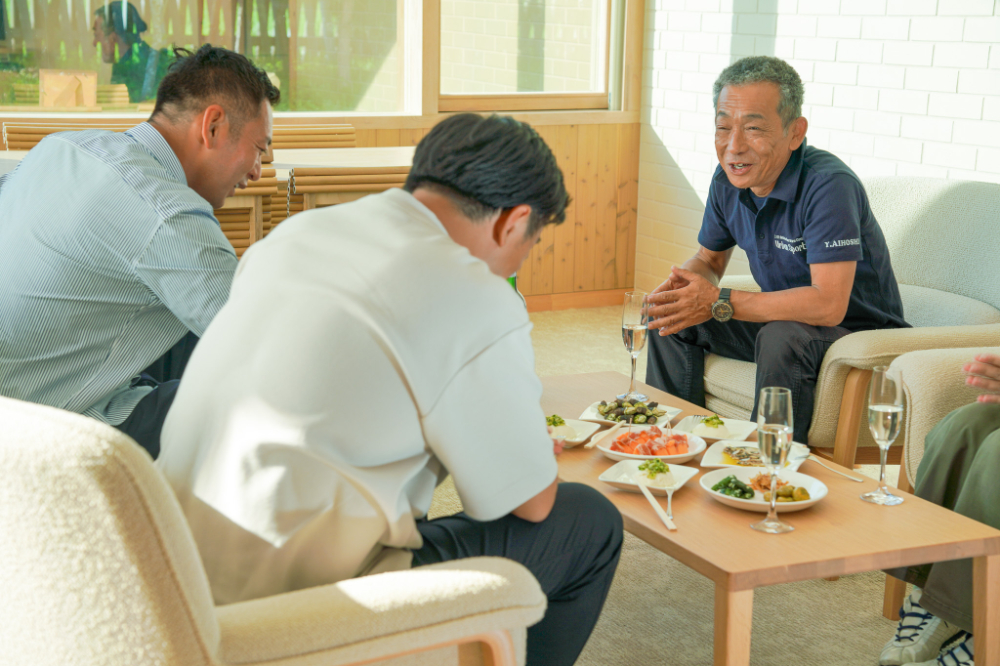
Aiboshi: You already applauded that earlier (laughs).
All of us: Laughter
Aiboshi: When I was watching you two at the safety stop in the shallow water, I thought, “Wow, that’s great. I thought, “Wow, that’s a big deal.
Kawamoto: You praised me, but did you do well with neutral buoyancy?
Aiboshi: There was a range of motion blur, but I didn’t think Mr. Kawamoto was moving at all. Takuya-san was standing still with the camera in his hand.
Takuya: When scuba diving, the camera control has to be adjusted by trimming with the lungs each time, but with the rebreather, once the camera is there and balanced, it doesn’t change that much, so I didn’t feel any discomfort.
Kawamoto: Mr. Aiboshi, do you usually scuba dive? I was wondering if you are a rebreather at all times.
Aiboshi: Of course I scuba dive. On that note, actually, scuba diving in Japan is about 10 years behind that of other countries, although it is hard to generalize due to laws and regulations. Mainstream scuba diving (open circuit) is probably 90% or so.
I have always wondered why people are so obsessed with diving when there are so many different ways to enjoy it, such as sidemounting. For example, before Corona, most Korean and Taiwanese divers brought sidemounts and dived around Onna Village in Okinawa Prefecture. But I don’t think there are many Japanese divers who know how to enjoy various diving styles. The truth is that there are many different styles of diving and many different ways to have fun, but because there are so few places that teach it, I feel frustrated that the overwhelming majority of people don’t know about it.

Kawamoto: In order to make up for the delay, I think we can push Japan forward at once by working not only with the diving industry, but also with government agencies that want to use diving as a tool to revitalize local communities, listed companies that want to educate the public about the environment, and other such people. In that sense, what Oceana wants to do now is to have people who are not local people learn about the local area and tell people about the unique attractions of the area that the local people are too close to be aware of.
I think that having Urban Sports cover the second episode of “Nippon no Umi to Bunka (Sea and Culture of Japan),” Yamagata, was enough to introduce the fun of rebreathers in addition to the charms of the Sea of Japan. Thank you very much, Urban Sports!
This dive store is the best place to dive in Yamagata and Tsuruoka Urban Sports
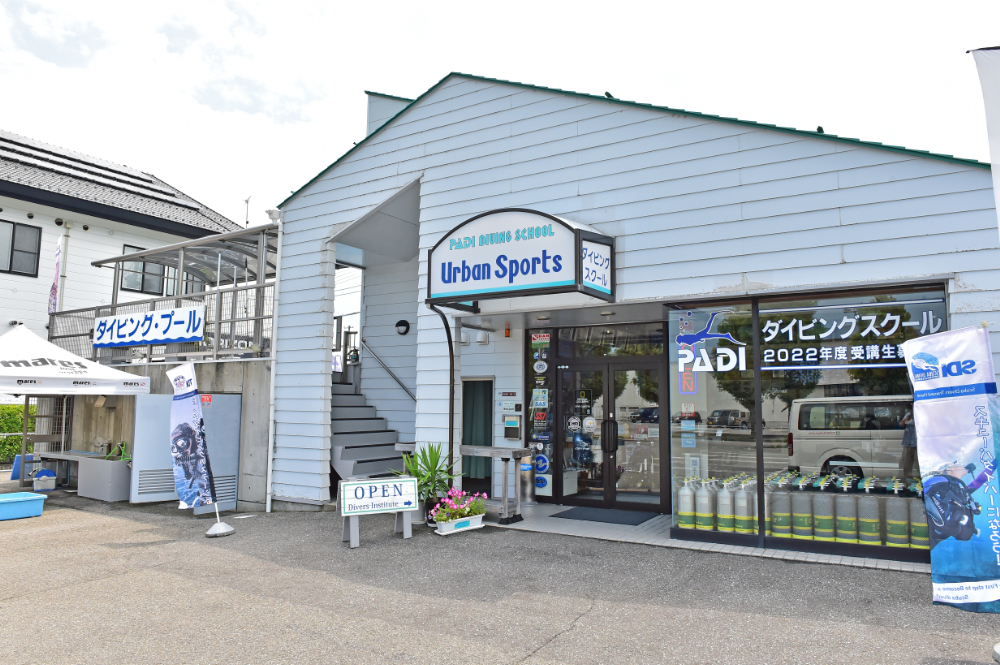
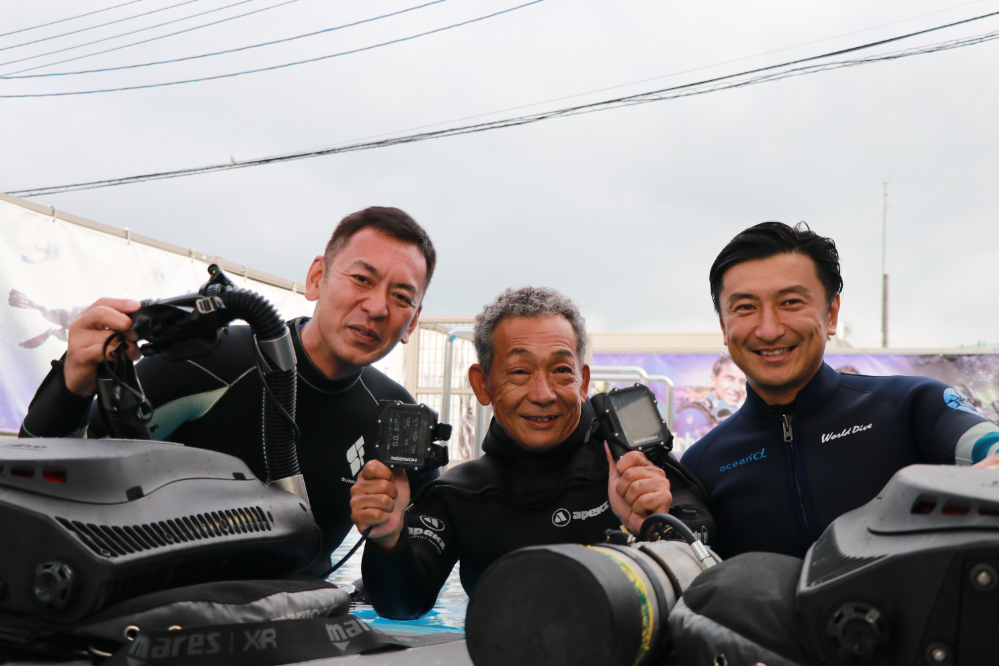
The dive center, now in its 28th year of operation in Tsuruoka City, has the best facilities in the Tohoku region and a wide variety of programs. In addition to regular C-card training and fun dives, the center also offers technical diving training, including rebreathers such as the one shown here. Led by the very experienced Katsufumi Aiboshi, who has been a diver for 44 years and an instructor for 35 years, his daughter Anna and other talented staff members will entertain you in the waters of Shonai.
Address: 26-3 Isehara-cho, Tsuruoka City, Yamagata Prefecture
